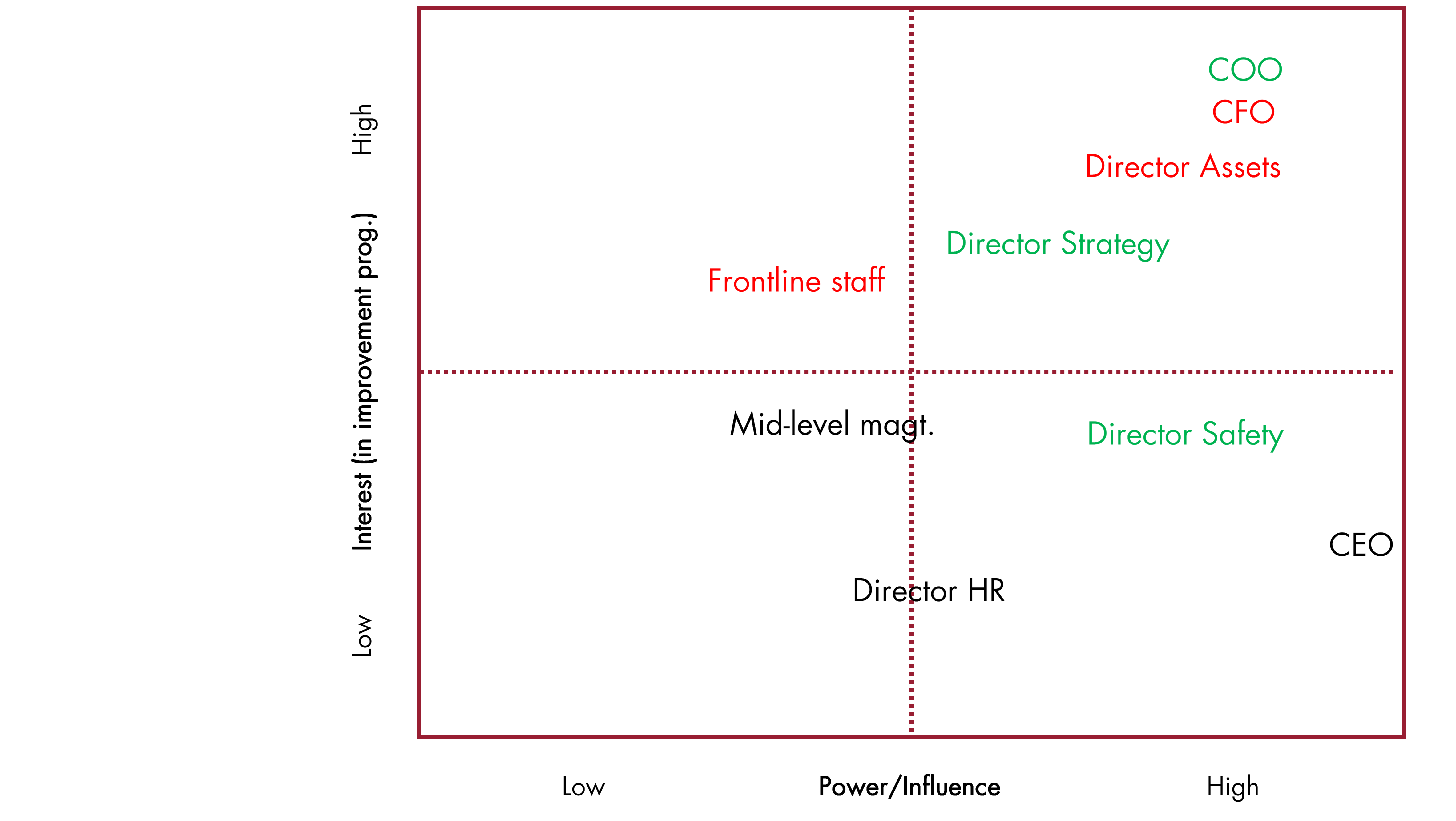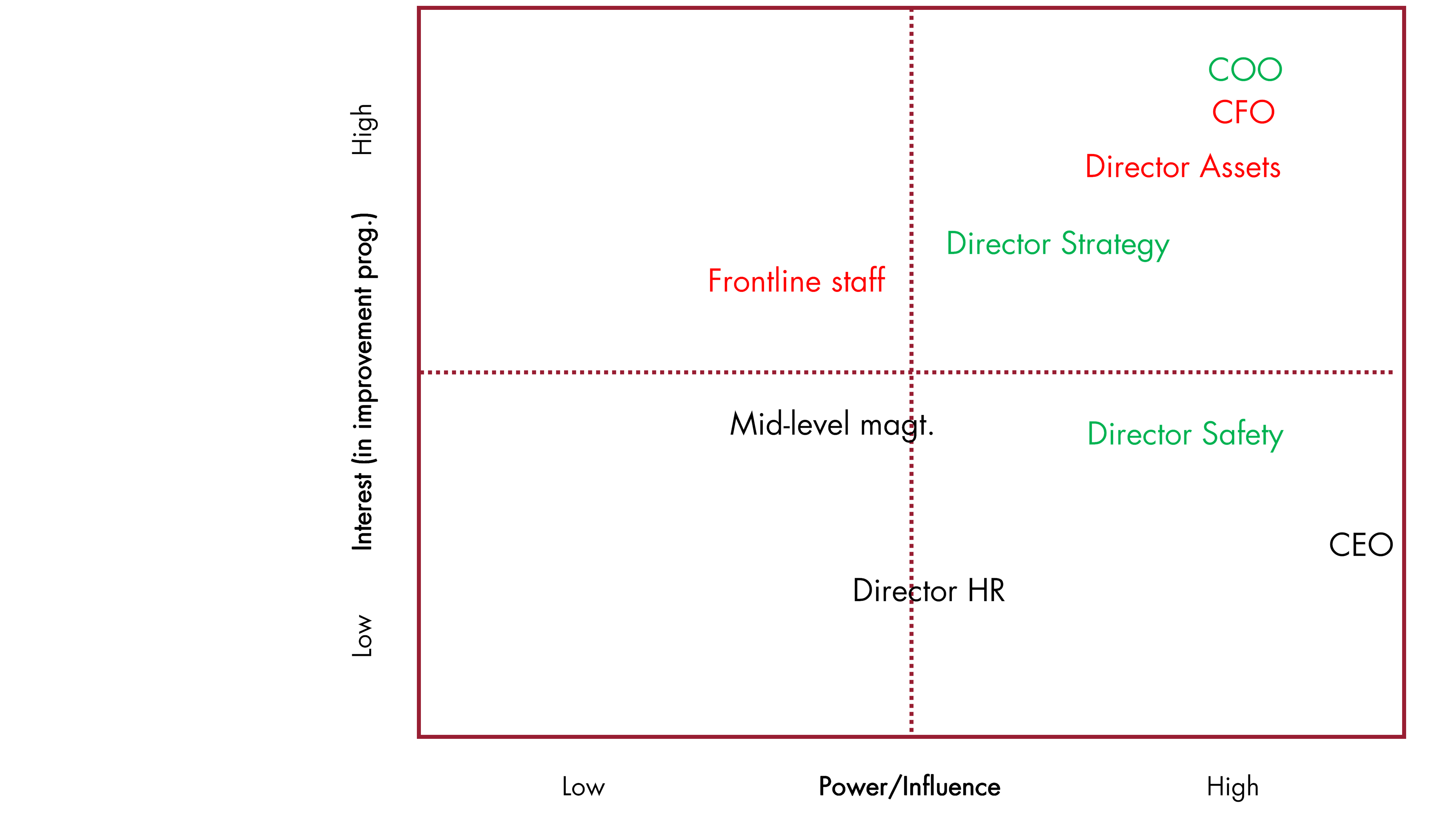How to Neutralise Detractors and Malcontents
Welcome to the first e-newsletter of 2019.
We see in the new year with an issue on how to handle the ‘problem children’ who are, unfortunately, a regular feature of any change or management program.
The Antiseptic Response to Anticipating Resistance
One of my biggest criticisms of change management literature and practice is the overly genteel way in which resistance to change is treated.
Now, engaging and mobilising stakeholders (that is, those who are actually or potentially affected by a change effort or who have some stake in it – they can be individuals, organisations or social groupings) is critical to the success of any change effort. That’s not news ... but typically not every stakeholder will be thrilled by the change:
- staff may not be happy about changes to long-standing business processes with which they are familiar
- the workforce and unions will not be enamoured of a cost-cutting or labour-shedding program
- staff may be concerned about the possible impact (being moved or displaced) by a restructure.
These issues are typically treated in an overly refined and sanitised way in the change management world where the common wisdom on solutions is to...
‘anticipate adversity’
‘highlight the positive aspects’
‘minimise negatives'
‘communicate as fully as possible, so that the need for change is understood'
‘stress that change will improve people’s chances of realising their individual potential’ and
‘emphasise that gains will more than compensate for losses’. Except of course for those who are vulnerable or who may lose their jobs, for whom we should ‘try to provide support’ (ie. outplacement counselling).
All of this is very tasteful. (Presumably the outplacement counselling comes after we have braided each other’s hair and talked about our feelings).
The Inhospitable Terrain of Change (aka People Are Jerks)
Allow me to add to this not altogether uplifting entrée to 2019 by reminding you of the growing body of research showing that we humans are biased, myopic, prone to peer pressure, overconfident, and liable to have our judgement distorted by random factors. Oh, and the less competent we are, the more likely we are to be overconfident. (Click here for a refresher and sources on the burgeoning field of behavioural economics which provides robust empirical research findings for the foregoing).
So, change occurs in a hotbed of predictable irrationality (to borrow a phrase from Dan Ariely).
And that’s before we consider…
- small ‘p’ political agendas and factional groupings on executive teams and workforces
- the lazy and/or time-servers who simply can’t be bothered
- those with grudges and axes to grind or who have been burnt by previous efforts and are looking for any opportunity to snipe, leak, or lob grenades
- grandstanders and show-ponies, and
- the power-hungry who will white-ant any idea which isn’t theirs.
This is the unpromising and inhospitable terrain in which we expect change to occur. Welcome to the game.
Structured Plotting and Scheming
What now?
My best answer, in summary, is to plot and scheme.
Manoeuvre.
Entice.
Charm.
Co-opt.
And because a key premise of my consultancy is to take a structured approach to dealing with problems* I advocate a structured approach to plotting and scheming (and manoeuvring, enticing, charming and co-opting).
[* the other key premise is an evidence-based approach to management]
The Power-Interest Grid
As foreshadowed last month the technique of choice for this structured approach to plotting and scheming is the Power-Interest grid on which each stakeholder is plotted according to their influence (horizontal axis) and their interest (in the political sense of the term) in the particular change or program (vertical axis). Each stakeholder is marked on the grid in terms of where they currently stand in relation to the change (an ‘as is’ basis). The 'to be' position on the grid where each stakeholder needs to be for the change to be successful can also be plotted.
Completing a Power-Interest grid is usually undertaken as a collaborative (albeit confidential) exercise in a workshop format where the grid is made up of butcher’s paper stuck to a wall and each stakeholder’s name is written on a sticky note: workshop participants deliberate on where each stakeholder should be positioned on the grid, and whether that stakeholder is a supporter, detractor or neutral. I recommend colour-coding each stakeholder accordingly: green for supporters, red for detractors.
And so to the issue at hand: how do we handle the malcontents and detractors? More specifically, how do we handle the red coloured stakeholders?
The Fine Art of Malcontent Management: A Case Study
Rather than attempting to derive general principles of malcontent-management [sic] it is easier to demonstrate with an example.
Our hypothetical case study sees the Chief Operating Officer (COO) of an organisation wanting to introduce a program to drive improvements in processes in order to meet a new quality standard set by the international standards association (the ISO).
A change group has been assembled and (with the help of a very able consultant to facilitate…) conducted a workshop in which they identified each of the stakeholders and mapped them as follows:


The COO is high in organisational influence and, as the driver of the improvement initiative, is high in interest: she is committed to the change and wants it to succeed. It’s her baby.
The CFO is also high in organisational influence, but sees himself as the CEO in waiting and doesn’t want to be upstaged by the COO. He is using the cost of the initiative and quality accreditation as a basis to oppose it.
The Director Assets is also actively opposed to the change since it will impact his patch and he doesn’t want anyone intruding on his turf. There’s no love lost between the Director Assets and the CFO.
The Director Strategy sees an opportunity in the improvement initiative and is supportive, but he has less clout than the main business executives. He has a positive working relationship with the Director Assets.
The Director Safety is broadly supportive since the initiative will improve her KPIs, but she is not engaged at the moment.
The CEO has the most influence in the organisation, but only has passing interest in the initiative at present as he is preoccupied with a range of other issues.
Frontline staff have less influence than the executives, but have caught wind of the initiative and are suspicious that it will mean cost-cutting and job disruption.
Mid-level management and the HR Director are basically neutral and have not engaged with the initiative to date.
Analysing the Terrain
Before developing any actions, I recommend taking a metaphorical step back and looking at the completed current-state map as a whole. What stands out?
In our case study, the most important aspect is the low interest and neutrality of the CEO: this will be an obstacle for any major organisation-wide change effort. The first task then is to engage the CEO and turn him into a raving fan of the initiative.
Another interesting aspect is the cluster of resistance and the potential for an ‘unholy alliance’ between the CFO and the Director Assets – although sworn enemies usually, if these two band together on this issue they could scuttle the initiative.
The other noteworthy aspect is the resistance posed by frontline staff. Although having less power than executives, if the initiative has poor take-up with those implementing it, it will lack credibility and be mere head office ‘window dressing.’
As a general rule, the aim is to get supporters into the top right hand quadrant, and to get detractors out of that quadrant. Or to turn detractors into supporters (ie. turn them from red to green).
Dealing with Detractors
There are a number of specific ways to deal with detractors; you can aim to …
- cultivate them so as to turn them around and ‘convert’ them to the cause
- reduce their interest in the initiative or program
- use others to convince or direct them to support the initiative, or
- reduce their influence.
I recommend against deal-making and ‘horse-trading’ since these muddy the organisational waters and mean unrelated issues get traded off against each other, reducing coherence and leading to potentially dysfunctional outcomes.
In the current situation the CEO would be engaged, perhaps with a face-to-face briefing on the well-developed case for change. With the CEO on board, the CFO could be directed by the CEO to support the change (or at least be neutralised from doing any damage). The case for change would have to be well-developed enough to provide a solid financial case for the initiative, so as to head off any arguments the CFO throws at it.
The Director Assets could be co-opted into supporting the initiative by bringing him ‘into the tent’ and inviting him to participate on the initiative’s Steering Committee. The Director Strategy could likewise be engaged, and be persuaded to draw on his relationship with the Assets Director to help get him over the line.
Finally, mid-level management could be appraised of the initiative at manager’s forums. Requirements to incorporate the initiative into Group and Divisional business plans and performance agreements will help solidify the visibility of and engagement with the initiative, and embolden mid-level management to engage their frontline staff to back the initiative (or at least not stymie it).
Necessary Finesse
Finesse is required in undertaking these manoeuvres, and nothing can ever be taken for granted. Monitoring of the stakeholder environment and active championing, as always, pay dividends.
It takes effort and forethought to think through each stakeholder’s own agenda and then to orchestrate accordingly. But what’s the alternative … a stab in the dark? Blind faith?
Having seen the basics of how to manage detractors and malcontents, in the next e-newsletter we will look at how to create greater interest and support for your initiative.
In the meantime, if you would like to discuss how to entrench your program or initiative and improve its prospects for success, please call me on 0414 383 374, or contact me by return email.
Warm regards,
Michael

References:
John M. Bryson (2004) ‘What to Do When Stakeholders Matter: Stakeholder Identification and Analysis Techniques’ Public Management Review Vol.6, No.1, pp.21-53
Robert Heller (1998) Managing Change Dorling Kindersley, pp.34-39.
© Michael Carman 2019
